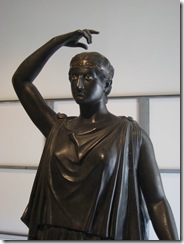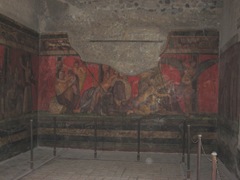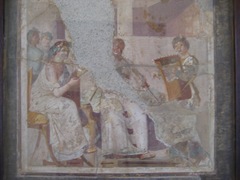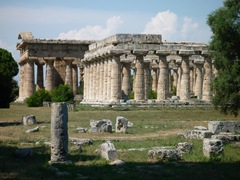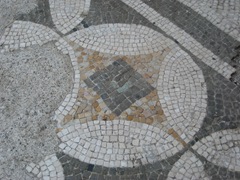Located on the coast of the Bay of Naples in Italy, Herculaneum is a lesser known Roman town which was destroyed along with Pompeii in the infamous eruption of Mt. Vesuvius in 79 AD.
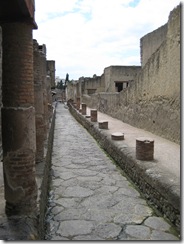
As Herculaneum was less affected by falling debris from the initial stage of the eruption, it is better preserved than the more popular site of Pompeii. Many of the upper levels of the buildings remain preserved. The photograph below shows an example of an ornate ceiling in the second style of painting which was prevalent in the 1st Century BC.
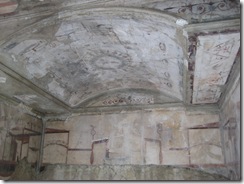
The photograph below shows stairs leading to the upper floor of a villa.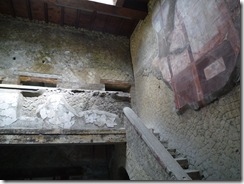
Even artefacts in wood have survived, having been carbonised in the intense heat of the eruption. The photograph below shows original wooden window frames preserved along with the iron bars of the window.
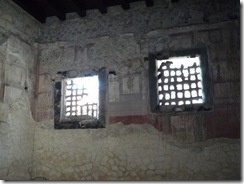
Below, a set of shelves for amphora located in the blacksmiths shop.
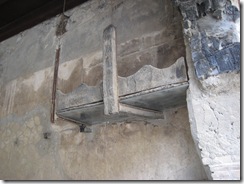
In the Villa of the Wooden Partition you can see the partition wall complete with sliding door and parts of a wooden bed frame remain in one of the bedrooms.
Other highlights include the Villa of Neptune and Amphitrite named after the fantastically colourful mosaics in the summer triclinium or dining room.
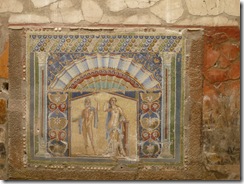
Herculaneum is also home to the grand Villa of the Papyri which belong to Lucius Calpurnius Caesonios, Julius Ceaser’s father in law and contained a vast library of scrolls which new techniques are enabling us to read. It also contained fine bronze statues now forming a significant collection in the Archaeological Museum of Naples.
Though on a smaller scale to Pompeii, the richer town of Herculaneum carries advantages to the visitor in its superior state of preservation. Also being less well known it attracts far less visitors making for a more pleasant visit.
All photographs are taken by the author and can be used as part of the Attribution NonCommercial NoDerivs creative commons licence.
